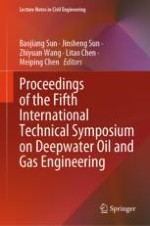This book is a compilation of selected papers from the Fifth International Technical Symposium on Deepwater Oil and Gas Engineering and the Fourth International Youth Forum on Gas Hydrate (DWOG-Hyd 2023), held in Qingdao, China, in October 2023. The book focuses on the advancement of techniques for the deepwater oil and gas exploitation and natural gas hydrate exploitation. The book introduces new ideas for exploring deepwater oil, gas and hydrate in a safe and efficient way. Advances of the deepwater oil, gas and hydrate drilling and production in South China Sea, in oil and gas flow assurance and emerging technologies based on clathrate hydrate will be presented. It is a valuable resource for both practitioners and academics working in the field of deepwater oil and gas engineering.
